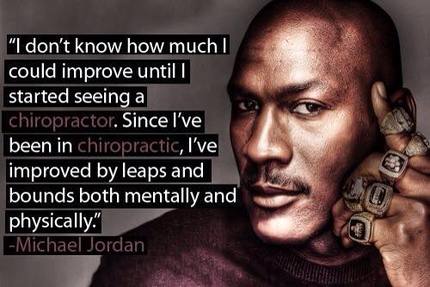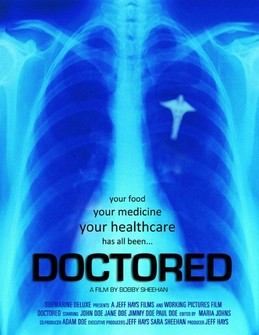6 Health Benefits with Chiropractic Care
10/3/2014
By: Albert Huang, DC  What's the first thing that comes to mind when you hear the word chiropractic? Did you instantly think back or neck pain? Adjustment? Spinal health? Most people would associate going to a chiropractor with the aforementioned. Certainly, chiropractors perform adjustments and yes, chiropractic is effective in reducing back pain but is there anything more that they can help you with above and beyond spinal health? Let's explore the 6 Biggest Benefits of Chiropractic Care: 1) Stress Relief Studies show that chronic stress is related to disease onset and negative health effects. Stress is a sympathetic reaction that triggers a fight or flight response in the body. The inability to cope with stress overtime results in muscle tightness, fatigue, and nerve irritation. Chiropractor's can help lessen stress through body work, breathing techniques, and exercise prescription. Spinal adjustments can also help the body return to a more balanced, relaxed state by improving neurological function and adaptability. 2) Pain Management Chiropractic is a safe, natural, and drug-free approach to pain management. Research has shown this treatment option to be effective in reducing headaches, back, and neck pain. The goal with therapy is to address the root cause of the pain and improve function. 3) Healthier Brain function & Mind-Body connection Your brain is the master controller and orchestrates everything that happens in your body. Your attention, cognitive processing, learning, motor-control, breathing, heart rate, blood pressure, and digestion are all controlled by your brain and nerve system. Spinal misalignments may cause nerve interference and lead to mind-body dissociation. The intent of chiropractic treatment is to alleviate aberrant forces and optimize communication between the nervous system to the rest of your body. When your brain and nerve system function well, your body functions well. 4) Better Posture Chances are that you spend at least half of your day sitting. Since, humans weren't built to sit for extended periods, the majority of us experience postural changes and strains. Poor posture is related to fatigue, decreased productivity, back and neck pain. Your chiropractor is trained to provide exercise recommendations, stretches, ergonomic and lifestyle counselling, physical therapy and rehabilitative procedures to improve your musculoskeletal system and posture. 5) Improved Sex, Libido, & Reproduction Sexual function once again stems from the ability of the nervous system and endocrine to perform well. Proper communication by nerve signalling between your sex organs, hormonal center, and musculoskeletal system are important for libido health and sexual function. So how are the endocrine and nervous system linked? A part of the brain called the hypothalamus connects these two essential systems. The hypothalamus regulates basic needs such as sleep, hunger, thirst, stress response, and sex. This is why people under chiropractic care often report improvement in things like depression, anxiety, sleep patterns, energy levels, sexual performance, and reproductive function. 6) Optimize Body Performance and Overall Health The body is a self-regulating and self-healing organism that knows how to repair and preserve itself. The body heals itself through cellular processes that are directly controlled by the nervous system. It will do this as long as there is no interference in the nerve flow to the tissues. Some of the most impacting areas of chiropractic medicine include improved circulation, relaxation. better performance, enhanced mobility, and faster recovery time. Your chiropractic doctor will thoroughly assess your overall health and if they discover underlying health problems or conditions that are outside of their area of expertise, they will refer you to a medical professional who can help you. Book your appointment today and find out first hand what other benefits chiropractic can offer you!
109 Comments
 Chances are that you or someone you know has been affected by back pain at some point in your life. The statistics are stacked against you and I, as low back pain affects at least 80% of us some time in our lives, perhaps 20-30% at any given time. Back pain can be debilitating and can affect each person differently. Some people only experience discomfort for a few days while others suffer from it for months or even years. Acute back pain can last anywhere from days to weeks and is usually mechanical in nature. Symptoms may range from muscle ache to shooting or stabbing pain, limited flexibility and/or range of motion, or an inability to maintain proper posture. The good news is that these acute episodes generally respond well to conservative therapies and have the ability to resolve relatively quickly. Albeit some acute pain syndromes can progress to become more serious if left untreated. Chronic back pain is classified as pain persisting for three months or greater. It is generally more complicated and multi-faceted in nature. In some instances, pain may travel or radiate to another part of the body causing distal numbness, tingling, and/ or weakness. Chronic pain syndromes can involve physical, chemical, and/ or psychological components which can require more therapy time and more in-depth treatment protocols. At any rate, back pain is debilitating and can be a lingering nuisance in our daily routines. The key to successful treatment and recovery starts with the ability to determine the primary reason(s) causing the problem. A symptom such as pain may seem urgent but pain is merely a residual effect to a primary dysfunction. Pain fibers only make up less than ten percent of body's overall nerve fibers. This means that there can be a dysfunction, pathological problem, and/or biomechanical imbalance occurring somewhere in the body without pain being present. Therefore, basing wellbeing on pain-symptoms alone does not effectively measure one's overall health. Getting a detailed examination by a qualified health practitioner will help determine the root cause of pain generators which accordingly can help better one's prognosis. Let's explore the viable treatment options for low back pain and the efficacy of each. Let us first start with a visit to our primary care physician. Typically, after a short-lived appointment, the medical doctor may suggest some rest and avoidance of strenuous activity. He or she may opt to write out a prescription for a few pain killers and muscle relaxants for your back pain. Having trust in our physician, we take the medications sometimes without questioning: "Is this natural? Are pharmaceutical drugs the best solution to a small case of back pain?" Watch the Documentary "DOCTORED"
3/6/2013
 Take a look at our Health Care system from a different perspective. Empower your natural innate abilities to heal and thrive. Be proactive in your health and take a holistic approach to your life; natural medicine, healthy eating, proper rest, exercise, breathe, live. Sit back, relax, and enjoy this documentary, "DOCTORED". Visit, this link to watch "DOCTORED" (Use our account to log in) Email: [email protected] Password: platinumhealth Please watch with an open mind - Note: there is a time and place for both Western Medicine and Natural Medicine.  Most often people associate going to a chiropractor for the treatment of low back and neck pain. Although chiropractors do effectively treat pain in the neck and low back, they also address your health through a preventative-holistic model. Your treatment from the chiropractor will often include manual therapy, exercise, diet and other healthy lifestyle modifications to keep you strong and functioning at your optimal levels. Pain is only a small fraction of the big picture and is the body's natural defence mechanism to alert the brain about a deeper problem occurring somewhere else in the body. Pain does not necessarily tell you what or where the problem is, it only tells you there is a problem hence, using a pain-based model is not an accurate measure of health. The job of the chiropractor is to find the root cause of what is eliciting the pain and address the problem by altering or eliminating the pain mechanism. How do chiropractors find the root cause of your problem? Through the process of history taking and a physical examination, a chiropractic doctor will gather clinical information about a patient's presenting symptom(s) with the end goal of formulating a diagnosis. The diagnosis will provide the clinician with a big picture of the patient's general health and presenting complaint(s). The identification of a spinal joint dysfunction or vertebral subluxation is one of the chiropractor's primary goals. A spinal subluxation is a misalignment of the vertebrae in your spine which leads to altered tissue, abnormal motion, compensation, pain, and poor nerve function. Pain and dysfunction(s) arise in the body when these subluxations are present. They result in a less efficient nervous system, causing a diminished immune response which can lead to an increased likelihood of getting sick or worse, disease. Think of your nervous system or nerves as a water-hose; water/ electrical flow is best when the hose (nerve) has no impedance. Contrary, when a kink (vertebral subluxation) is present, the flow becomes weakened and compromised. The central nervous system is the most important domain to a healthy functioning body. Your nervous system is composed of your brain and spinal cord and has influence on most bodily functions, such as awareness, motor movement, sensation, organ function, speech, and memory. It is important to have free-flowing communication between these structures and nerves in order to have a strong-responsive body. By finding and addressing these spinal subluxations, chiropractors invariably improve nervous system function via an adjustment. A decrease in pain is a direct result from a better functioning nervous system. Chiropractic treatments are guided by simple rules of science, whereby an external stimulus from a chiropractic adjustment will cause an internal response and reorganization of bodily systems. This reorganization is a direct result of neurological input to the central nervous system which promotes adaptive change and restoration in health. Chiropractor's do not 'fix' the spine, rather we provide the stimulus that your body needs in order to facilitate its own healing process. Some Benefits of chiropractic and spinal manipulation include, ~ increased mobility ~ improved immune function ~ increased energy and vigour ~ decreased pain ~ greater mind-body connection ~ increased proprioception and awareness ~ reduced pressure off nerves to promote enhanced nerve conduction ~ reduced stress and enhanced relaxation ~ quicker recovery time ~ increased circulation and nutrient supply ~ improved sleep Ideally establishing a preventative and proactive lifestyle before pain arises, is the course one should strive for. Take an active approach to your health and book your spinal check up. By: Albert Huang, DC |
AuthorPosts inspired by the team at Platinum Health & Wellness. Archives
June 2025
Categories
All
|
|
 RSS Feed
RSS Feed